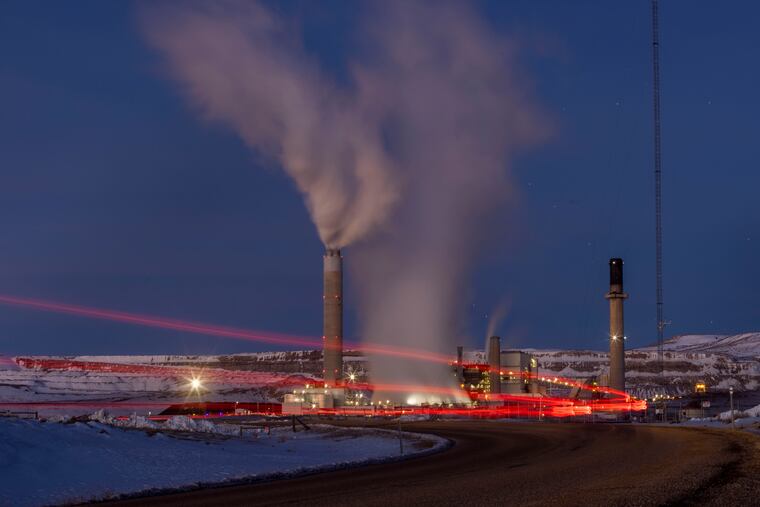Silicon Valley’s tech billionaires rally around nuclear as energy crisis looms
Some believe the combination of tech advances and a new urgency around ditching fossil fuels could be a catalyst for nuclear energy.

In recent weeks, some of Silicon Valley’s most famous technologists have hailed a historically polarizing energy source — nuclear power — as a solution to both cutting carbon emissions and weaning the world off now-controversial Russian gas.
Billionaire entrepreneur Elon Musk wrote on Twitter that nuclear is “critical” to national security, while the risk of radiation is overplayed. And venture capitalist Marc Andreessen called for “1,000 new state-of-the-art nuclear power plants in the U.S. and Europe, right now.”
The war galvanized a sentiment which has been building in recent years in the start-up world, where billionaires including Bill Gates, Jeff Bezos, and Peter Thiel have opened their wallets to back next-generation nuclear companies. None of the advanced reactor start-ups has yet produced an operating commercial product, but some believe that the combination of tech advances and a new urgency around ditching fossil fuels could be a catalyst for the sector — which has mostly languished in regulatory purgatory since the 1970s.
“We wouldn’t be having a conversation about innovation in nuclear power today without the investment and thinking of the leaders of Silicon Valley,” said Josh Freed, who specializes in climate and energy at public policy think tank Third Way in Washington.
Last year, venture investors plowed a record $3.4 billion into nuclear start-ups — more than in every year over the past decade combined, according to research firm PitchBook. That number reflects very early-stage start-ups as well as more mature companies like Commonwealth Fusion Systems and Helion Energy Inc., both of which raised funding rounds of $500 million or more in 2021. In the previous decade there was an average of fewer than 10 deals a year. Last year the number jumped to 28.
The VC funding follows a decades-long dry spell for nuclear power. After it was developed in the 1950s, worries over safety and waste storage, along with accidents at Three Mile Island, Chernobyl, and Fukushima hardened public opinion against the technology. Meanwhile, high costs made it less attractive than natural gas and other alternatives, as did regulatory hurdles. The Watts Bar Nuclear Plant, greenlit in 1973, was the last nuclear project to be approved in the U.S. It suffered from significant delays and cost increases and only began operating in 2016.
But as concerns over climate change grow, nuclear power’s advantages have become clearer. Like solar, nuclear power has no carbon emissions; unlike solar, it can reliably produce energy 24 hours a day. It’s also a path toward energy independence. The war in Ukraine drove gas prices in the U.S. to an all-time high earlier this month. While building more nuclear reactors won’t alleviate the current pain — even the new, smaller designs will take years to license and build — supporters say it could help head off the next crisis.
Recent innovations in nuclear fission, the decades-old technology that captures energy released when atoms are split, include better methods for storing nuclear waste and cooling systems, which mean new reactors can be smaller and more efficient. Meanwhile, venture-backed start-ups that focus on nuclear fusion, the technology that captures energy created when atoms are merged, are progressing past the science project stage and toward commercialization faster than previously anticipated.
Fusion, a kind of holy grail for energy, has never successfully produced more power than was required to actually create the nuclear reaction. But some start-ups believe they are getting closer to flipping the equation. “Silicon Valley has been the foundation of the entire private fusion industry,” said Christofer Mowry, chief executive officer of Vancouver-based General Fusion, which is backed by Bezos and others. Mowry, who also serves on the board of the nonprofit industry group Fusion Industry Association, said venture investment has helped dozens of fusion start-ups mature to the point that governments are starting to engage. In an example earlier this month, the U.S. Congress approved record funding for a public-private partnership program to build new fusion devices.
David Kirtley, a former implementer of fusion programs for the U.S. Department of Energy, started a fusion start-up called Helion in 2013. The following year, he joined the Silicon Valley start-up incubator Y Combinator, where he said he learned to “reprogram” his thinking to be more ambitious. At YC, “they didn’t talk about one-year timelines,” Kirtley said. “Everything was next month and next week.”
Helion has raised more than $570 million from investors including former YC President Sam Altman, Thiel’s Mithril Capital, and Facebook cofounder Dustin Moskovitz.
Helion aims to demonstrate net electricity from fusion, meaning the system creates more power than it consumes, in 2024 and create a commercial system by the end of the decade. “I wish we would have joined Y Combinator five years earlier,” Kirtley said. “We could be even farther along.”
Nuclear fission start-ups could have a more immediate impact. TerraPower, founded and bankrolled by Bill Gates, uses advanced cooling materials including molten-chloride and liquid-sodium to build smaller, cheaper and more efficient reactors than conventional ones that use water for cooling. TerraPower plans to build two reactors in cooperation with the Energy Department, with its first commercial reactor to be located in Wyoming. TerraPower said late last year it will apply for a construction permit with the Nuclear Regulatory Commission in 2023 and expects to begin operations in 2028.
TerraPower has seen new interest from countries including Romania and Poland following Russia’s invasion of Ukraine, said Director of External Affairs Jeff Navin. “Not surprisingly we’re seeing the most interest from those places that are bordering Russia and relying on them for energy,” Navin said.
Some countries that had been turning away from nuclear power are now reconsidering. “Germany would have needed less gas if they hadn’t shut down nuclear,” said Judi Greenwald, executive director for the Nuclear Innovation Alliance.